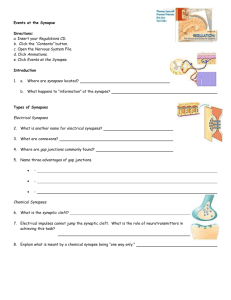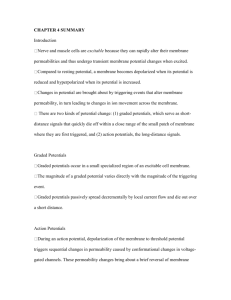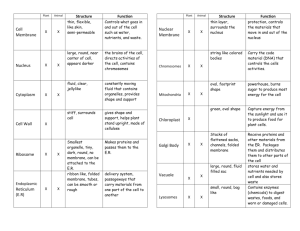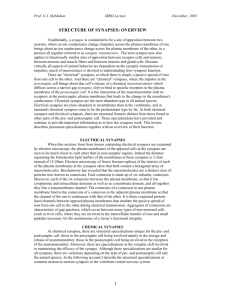Endocrine System: Overview
advertisement
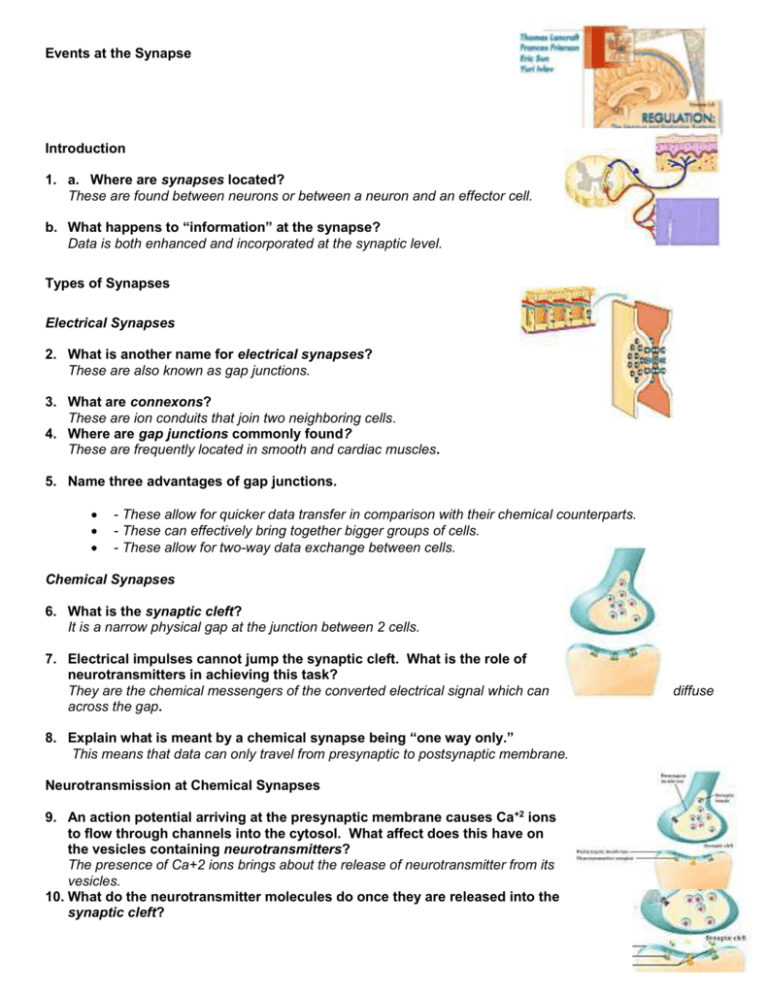
Events at the Synapse Introduction 1. a. Where are synapses located? These are found between neurons or between a neuron and an effector cell. b. What happens to “information” at the synapse? Data is both enhanced and incorporated at the synaptic level. Types of Synapses Electrical Synapses 2. What is another name for electrical synapses? These are also known as gap junctions. 3. What are connexons? These are ion conduits that join two neighboring cells. 4. Where are gap junctions commonly found? These are frequently located in smooth and cardiac muscles. 5. Name three advantages of gap junctions. - These allow for quicker data transfer in comparison with their chemical counterparts. - These can effectively bring together bigger groups of cells. - These allow for two-way data exchange between cells. Chemical Synapses 6. What is the synaptic cleft? It is a narrow physical gap at the junction between 2 cells. 7. Electrical impulses cannot jump the synaptic cleft. What is the role of neurotransmitters in achieving this task? They are the chemical messengers of the converted electrical signal which can across the gap. 8. Explain what is meant by a chemical synapse being “one way only.” This means that data can only travel from presynaptic to postsynaptic membrane. Neurotransmission at Chemical Synapses 9. An action potential arriving at the presynaptic membrane causes Ca+2 ions to flow through channels into the cytosol. What affect does this have on the vesicles containing neurotransmitters? The presence of Ca+2 ions brings about the release of neurotransmitter from its vesicles. 10. What do the neurotransmitter molecules do once they are released into the synaptic cleft? diffuse As the neurotransmitter chemicals travel across the synaptic cleft, they bind to receptors, such as the ones found on the ligand gated ion channels, on the postsynaptic membrane. 11. Neurotransmitters cause postsynaptic ion channels to open. Explain how this can lead to either a graded potential or a hyperpolarization. Depending on which ligand gated ion channel the neurotransmitter binds to will determine the kind of change that occurs on the postsynaptic membrane. Opening of channels such as sodium channels which will make the inner membrane surface more positive will depolarize the membrane. Whereas opening of channels such as potassium channels that will make the inner membrane surface less positive will hyperpolarize the membrane. . 12. What causes an action potential to be generated? Depolarization of the membrane potential to threshold will produce an action potential. Excitatory and Inhibitory Potentials 13. Opening postsynaptic sodium ion channels cause graded potentials in that membrane. Explain why these are referred to as Excitatory Postsynaptic Membrane Potentials (EPSPs). These are labeled as EPSPs due to the location in which these electrical impulses are generated - @ the post synapse membrane and because they depolarize the oldmembrane. 14. Opening Cl- or K+ channels on the postsynaptic membrane will generate hyperpolarizations. Explain why these are referred to as Inhibitory Postsynaptic Membrane Potentials (IPSPs). On the other hand, when an ionic flow causes the inside of the cell to be less positive and makes it more difficult for the membrane to reach threshold and generate an action potential, it is called an inhibitory postsynaptic membrane potentials (ISPS.) 15. What influence do EPSPs and IPSPs have on whether or not an action potential will be generated at a neuron’s trigger zone? The effects of EPSPs and IPSPs on he membrane potential can be summed. If the combined effect of EPSPs and IPSPs causes the membrane to depolarize to threshold, an action potential will be generated. Summation 16. Postsynaptic membrane potentials are summed (combined) and integrated at a neuron’s trigger zone. These membrane potentials come from thousands of synapses from the neuron’s dendrites. a. Define spatial summation. Spatial summation is the consequence of the summing up of all the electrical impulses from many different synapses at the neuron’s trigger zone at the same time. b. Define temporal summation. In contrast, the effect of multiple impulses coming from one synapse over a period of time results in temporal summation. 17. IPSPs and EPSPs can combine to produce three possible outcomes. Describe what happens with each of the following. a. Hyperpolarization The membrane becomes more polarized than resting potential and an acton potential is not generated. . b. Sub-threshold graded potential The membrane depolarizes but does not reach threshold and an action potential is not generated. c. Threshold graded potential The membrane depolarizes to threshold and an action potential is generated.
